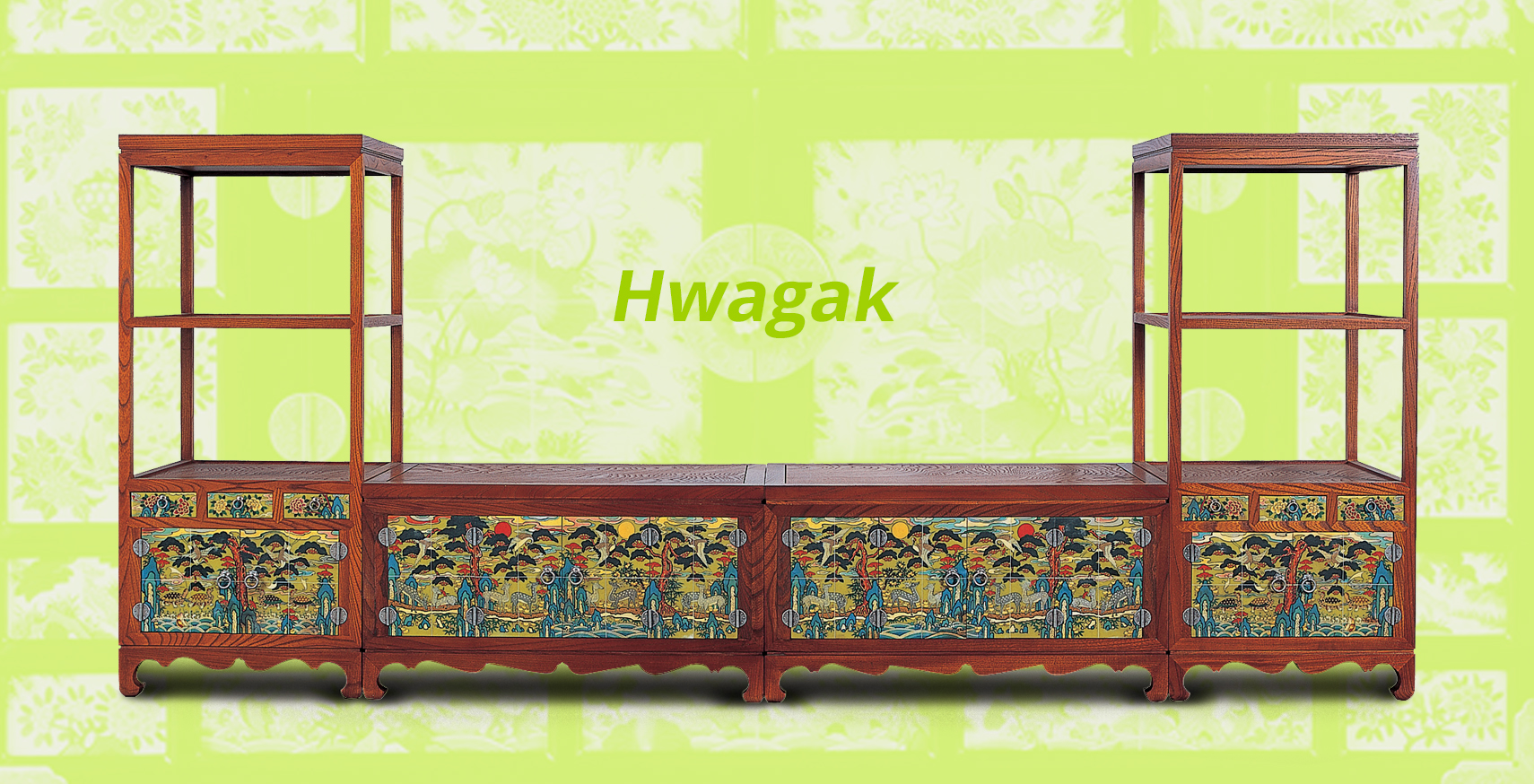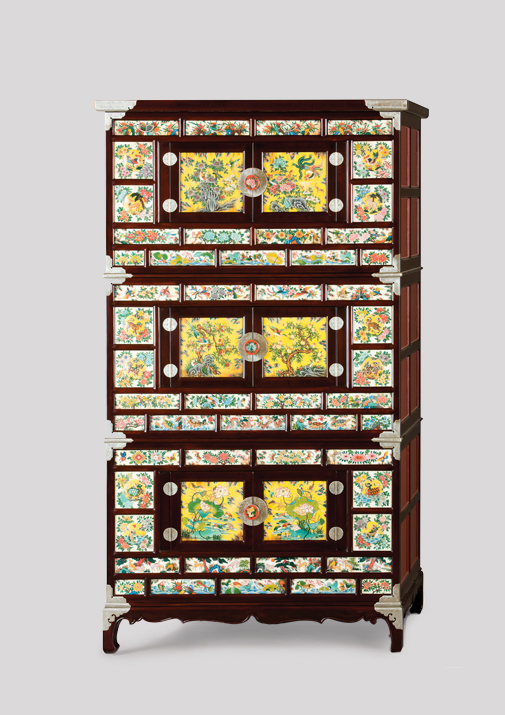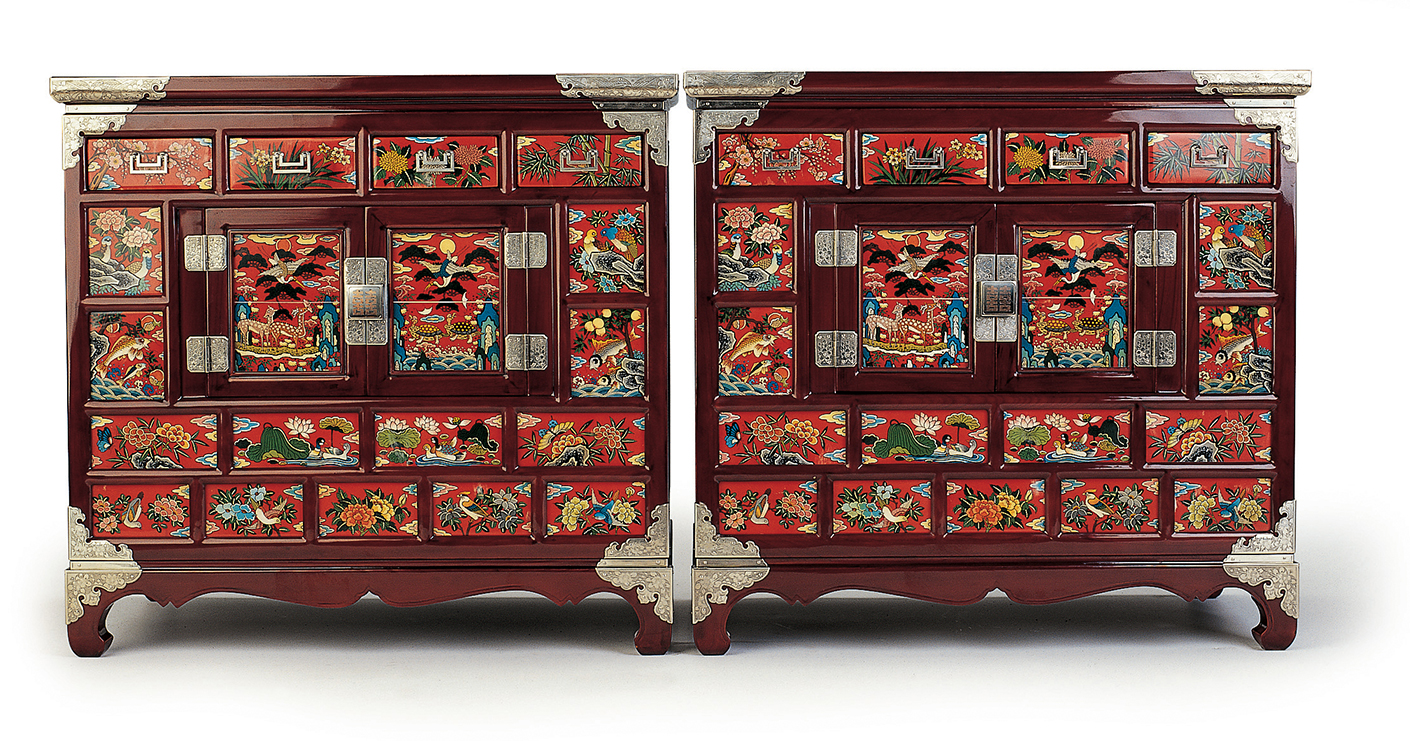April 2021

April 2021
Hwagak — or ‘brilliant horn’ — is a uniquely Korean lacquer technique of inlaying painted pieces of flattened ox-horn onto the outside surfaces of furniture or other household items, creating mesmerizing patterns in the process.
Written by
Robert Joseph K.
Photo Courtesy of
Lee Jae-man,
National Intangible Cultural Heritage No. 109
 Doorknob Table Set
Doorknob Table Set
Nobody is quite sure when this process began. However, several ancient items that appear to have made their way to Japan from the Korean Peninsula during the first millennium of the common era suggest that Koreans have been using oxbone inlays to artistic effect since at least the Three Kingdoms era (57 B.C.E. – 668 C.E.). Neighboring countries such as China have long used tortoise shells for inlaying as well, though only Koreans have used ox-bone to produce lacquer designs.
Lee Jae-man, a state-designated master of the craft, told the local daily Munhwa Ilbo in 2019, “When they see a piece of hwagak, many people think they are Chinese crafts because of the flashy colors. But hwagak is really a craft and art unique to Korea, not found in Japan or China.”
 Ten longevity Jewelry box
Ten longevity Jewelry box

To produce hwagak, the artisan takes the horns of young oxen, cuts off their tips, slices them open lengthwise and boils them in water to soften them. Afterwards, they heat the horns using direct heat from a stove to soften them further, making them easier to flatten. The artisan then uses tongs to open and flatten the softened horn.
Next, the artisan must turn the flattened horn into thin, translucent sheets. The horn is about 10 mm thick when first opened. Using a file, the artisan thins the horn until it is less than a millimeter thick — thinner than a sheet of paper — resulting in a beautifully translucent sheet.
Once this is done, the artisan paints the reverse side of the horn sheet with traditionally auspicious designs, including animals, flowers and Taoist motifs. Pigments made from ground stone are used to produce bright colors that liven the living environment.
Finally, the artisan takes the painted sheets of horn and attaches them — painted side down — to the surface of a piece of furniture or a household item using a protein-based glue traditionally made from fish parts and other animal products. Korean ox-horns are small, so even a small item may require many sheets before it’s complete.
 Small chest
Small chest
A painstaking technique, hwagak requires much time and skill on the part of the artisan. Moreover, the materials were expensive — ox-horns were especially hard to obtain as they were used to make archery bows, a vital weapon of national defense during the Joseon era (1395 – 1910). Accordingly, hwagak pieces were traditionally reserved for royalty and members of Korea’s old yangban elite of scholar-officials.
Only towards the end of the Joseon era did hwagak begin to attain a wider consumer base, when dozens of workshops gathered along the Hangang River in what is today western Seoul’s Yanghwajin area. A devastating flood in the early 20th century and the introduction of cheaply produced imitation products nearly killed the craft, however.
Today, hwagak is kept alive by a handful of dedicated artisans. The national government designated the craft Intangible Cultural Property No. 109 in 1996.
Because of their bright, cheerful color schemes, hwagak items were favored by aristocratic women. Popular articles included jewel boxes, sewing kits, hand mirrors, rolling pins and bedside chests.
Hwagak pieces have found their way into museum collections based not only in Korea but across the world, too. Several works — including a box, comb box and a sewing ruler from the Joseon era — are in the collection of the National Museum of Korea.
In New York, the Metropolitan Museum of Art has a hwagak box from the 19th century donated to the collection in 2015. Images of cranes, deer, dragons, phoenixes, tigers and other animals symbolizing good fortune and longevity adorn the box, as was common in handicrafts of the period.
Despite the beauty of hwagak, modern lifestyles have not necessarily embraced the craft. “As our style of houses have changed from traditional wooden houses to concrete-heavy apartments, and people prefer cheaper residences, traditional wooden crafts including hwagak lost their ground,” said Lee, the state-designated master, to The Korea Times in 2018. “Whether a craftwork can become a time-honored asset or fast-consumed furniture will totally depend on the users’ mind.”